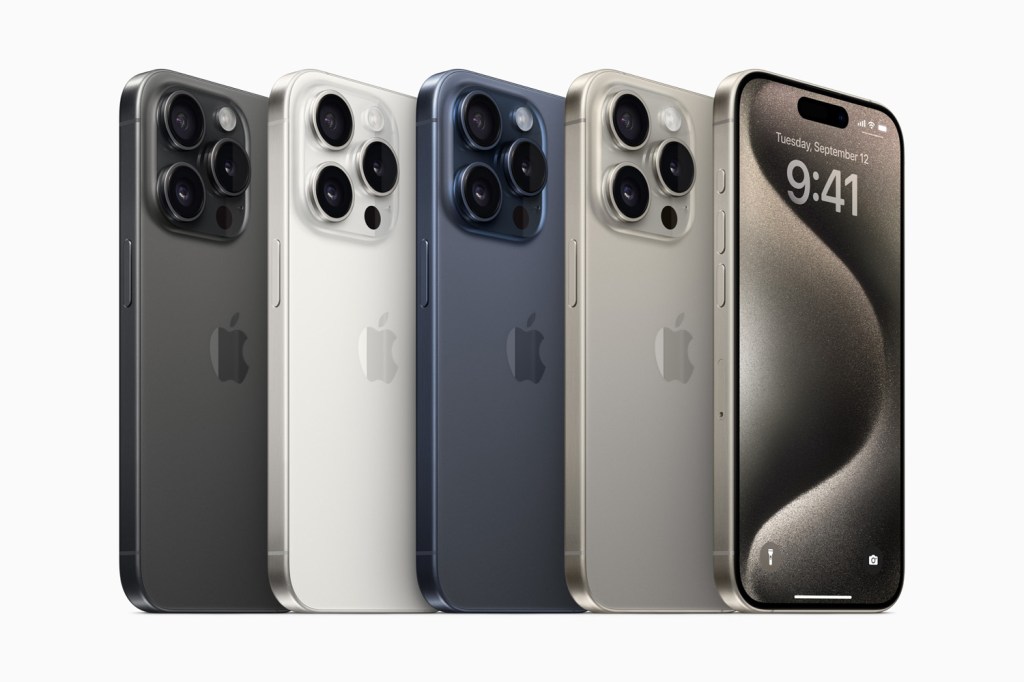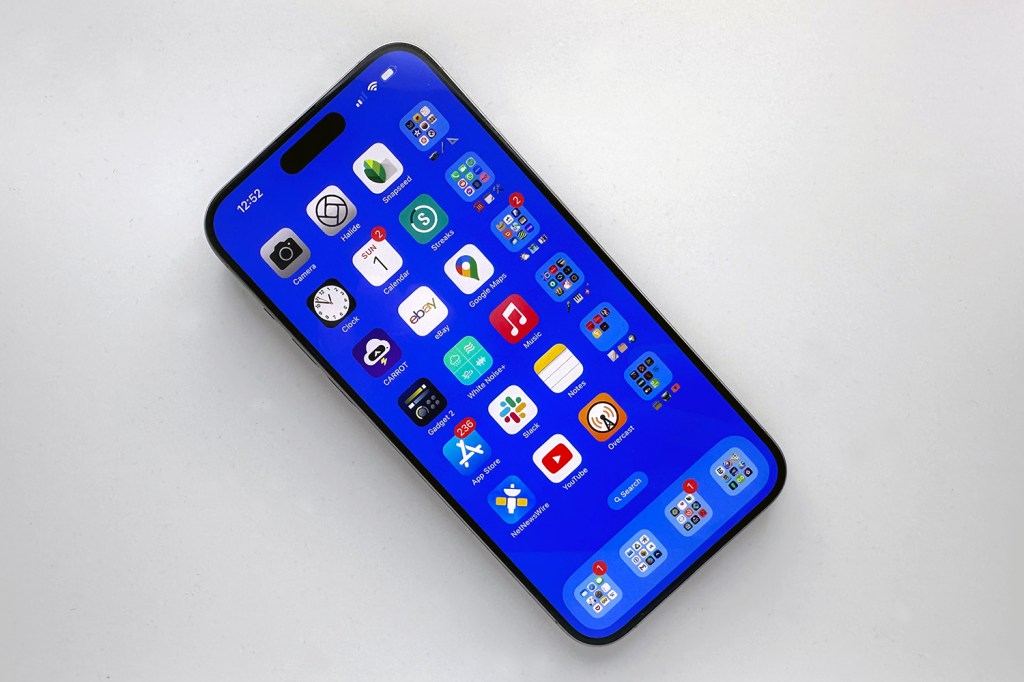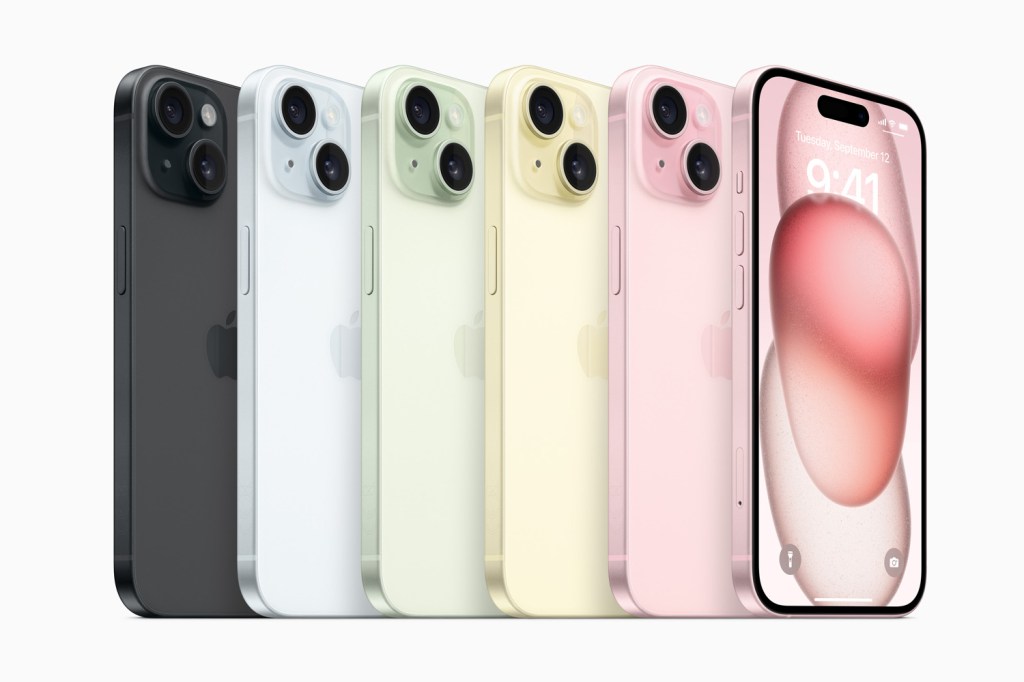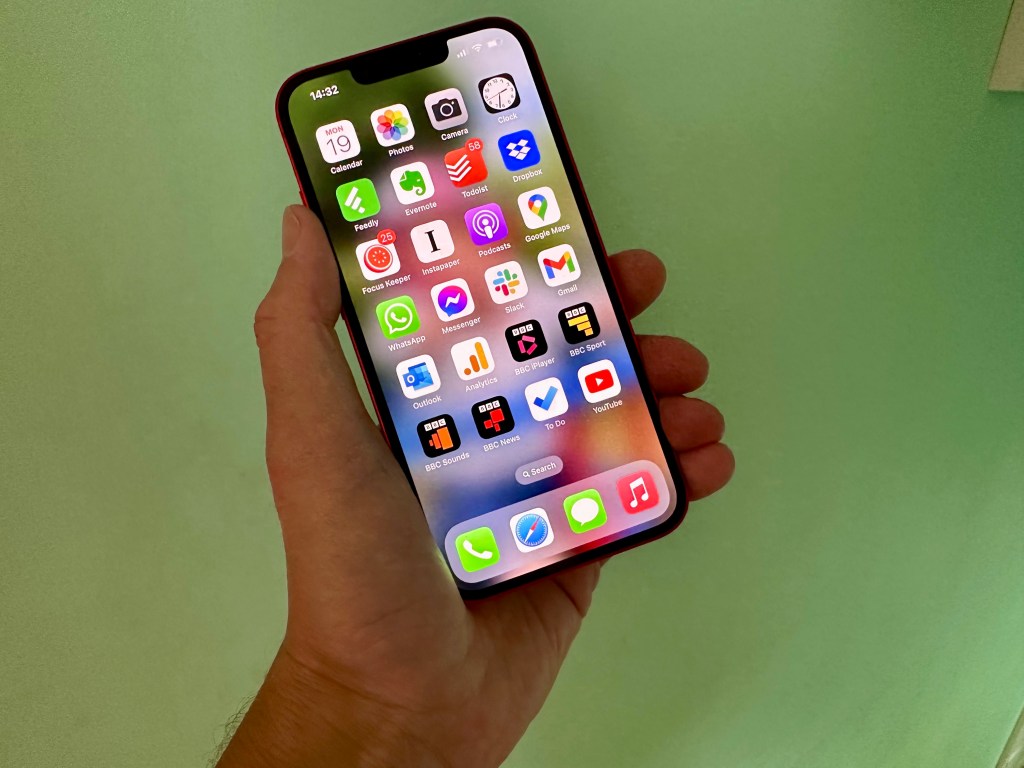Best iPhone 2024: every available Apple smartphone compared
How to pick your perfect Apple handset

Knowing which iPhone to pick used to be easy: you just had to choose the colour and the storage capacity. It was guaranteed to be among the best smartphones on sale. Things are not so simple now.
From Mini to Plus to Pro to Pro Max, Apple’s flagship phones ship in more variants than ever before. And just to muddy the waters further, the mobile maker still sells a few of its former headline handsets from previous generations, as well as the entry-level SE for buyers on a budget.
So there’s an Apple smartphone for everyone. The tricky thing is knowing how to pick it. Not sure where to start? We’ve set out the good, the bad and the things to note about the key iPhone models currently available to buy from Apple to help you decide.

1. iPhone 15 Pro
Stuff Verdict
More camera cleverness, USB-C support and a new Titanium build help this year’s Pro stand apart from the mainstream iPhone.
Pros
- Stupidly powerful for a phone
- Takes fantastic photos
- USB-C connectivity is long overdue
Cons
- Misses out on Pro Max’s telephoto skills
- USB 3 rather than Thunderbolt
- Not the most exciting colour options
| iPhone 15 Pro specs | |
|---|---|
| Display | 6.1in Super Retina XDR OLED, 2556×1179, 120Hz |
| Processor | Apple A17 Pro |
| Memory | 8GB RAM |
| Storage | 128GB-1TB |
| Software | Apple iOS 17 |
| Camera | 48MP + 12MP + 12MP (rear) 12MP (front) |
| Dimensions | 147x71x8.3mm, 187g |
You’d expect a lot from the iPhone 15 Pro. You’d want a competitor-crushing display, a powerful chip, and a camera that could feasibly shoot the next Avatar movie. For the most part, the iPhone 15 Pro really does pack a lot into its expensive Titanium frame.
The three rear snappers improve on the already stellar camera offering the iPhone 14 Pro gave us, with genuinely impressive zoom abilities up to 3x – but you’ll need to step up to the Pro Max to get a 5x optical lens. The customisable action button adds a host of new ways to interact with apps, and swapping Lightning for USB-C should simplify your cable collection. Open up the bonnet and you’ll find a host of upgrades, including an A17 Pro chip which makes the Pro run as smooth as silk. Battery life remains largely the same as the iPhone 14 Pro, though.

2. iPhone 15 Pro Max
Stuff Verdict
The kind of advance that more makes you sagely nod approval rather than whoop for joy, but you’d have to be joyless yourself to not love the new camera smarts and the potential from USB-C
Pros
- Great camera improvements
- USB-C connectivity
Cons
- No desktop mode
- USB 3 rather than Thunderbolt
| iPhone 15 Pro Max specs | |
|---|---|
| Display | 6.7in Super Retina XDR OLED, 2796×1290, 120Hz |
| Processor | Apple A17 Pro |
| Memory | 8GB RAM |
| Storage | 256GB-1TB |
| Software | iOS 17 |
| Camera | 48MP+12MP+12MP rear, 12MP front |
| Dimensions | 160x77x8.3mm, 221g |
On paper, the Apple iPhone 15 Pro Max is the firm’s best phone. It moves things on with a titanium body, customisable action button, and an impressive camera revamp led by a 5x optical zoom telephoto – all of which further differentiate this most premium of phones from the standard iPhone. But it’s also big, heavy and expensive.
Do the new features make the iPhone 15 Pro Max worth the cheddar? In truth, it depends. If you own an existing 14 Pro or Pro Max, then you should probably hang on to it. You’ll find little difference here. If you’re on a 13 Max or earlier, though, then there is enough in the iPhone 15 Pro Max to make it a worthwhile purchase.
- Read more: iPhone 15 Pro Max review

3. iPhone 15 / 15 Plus
Stuff Verdict
The best iPhones of 2023 are found at the top and bottom of the range. Most people will be well served with the regular 15, while those after more screen should pick up a Plus.
Pros
- Dynamic island across the range
- Corking cameras
- Ample performance and decent battery life
Cons
- Screen stuck at 60Hz
- USB 3 rather than Thunderbolt
- Recharging speeds sluggish compared to Android world
| iPhone 15/ 15 Plus specs | |
|---|---|
| Display | 6.1in/6.7in Super Retina XDR OLED, 2556×1179/2796×1290, 60Hz |
| Processor | Apple A16 Bionic |
| Memory | 6GB RAM |
| Storage | 128-512GB |
| Software | iOS 17 |
| Camera | 48MP+12MP (rear), 12MP (front) |
| Dimensions | 148x72x7.8mm, 171g / 161x78x7.8mm, 201g |
Comfortably the sweet spot of the 2023 iPhone line-up for most people, the iPhone 15 and 15 Plus bring the A16 Bionic CPU from last year’s Pro models so aren’t short on power. They also gain a Dynamic Island in place of the old notch, and make the switch from Lightning to USB-C.
The rear cameras have been upgraded with a much higher pixel count on the main snapper, and the display brightness has been boosted too. Battery life has climbed a little, but not dramatically. If you want a bigger display and battery the iPhone 15 Plus looks like good value compared to the smaller iPhone 15 Pro, and everyone else will find the standard iPhone 15 perfectly pocketable. It’s a shame Apple hasn’t upped the screen refresh rate from 60Hz, though – you’ll still need to step up to a Pro for that.

6. iPhone 14 / 14 Plus
| iPhone 14/ 14 Plus specs | |
|---|---|
| Display | 6.1in Super Retina XDR OLED, 1170 x 2532 pixels |
| Processor | Apple A15 Bionic |
| Memory | 6GB |
| Storage | 128GB, 256GB, 512GB |
| Software | iOS 16 |
| Camera | 12MP+12MP (rear) 12MP (front) |
| Dimensions | 146.7 x 71.5 x 7.8 mm, 172 g |
Now the middle child in Apple’s mainstream iPhone line-up, the iPhone 14 and 14 Plus were minor upgrades over the previous generation. Both kept the same A15 Bionic CPU, both offered the same three storage tiers, and both had a pair of camera lenses at the rear. Wider aperture lenses and improved image processing means it takes a better picture than the iPhone 13, though.
The biggest addition was emergency satellite communication, which is more a nice to have if you plan on adventuring into the wilderness than a reason for most shoppers to buy one. We’d suggest staying away from the regular iPhone 14 now if you’re on a budget – the iPhone 13 is the better buy – but the iPhone 14 Plus is still worth considering if you want a bigger screen, as the iPhone 13 Plus has been discontinued.
- Read more: Apple iPhone 14 review

8. iPhone 13
| iPhone 13 specs | |
|---|---|
| Display | 6.1in Super Retina XDR OLED, 1170 x 2532 pixels |
| Processor | Apple A15 Bionic |
| Memory | 4GB |
| Storage | 128GB, 256GB, 512GB |
| Software | iOS 15 |
| Camera | 12MP + 12MP (rear) 12MP (front) |
| Dimensions | 146.7 x 71.5 x 7.7 mm, 174 g |
Following the iPhone 12 was always going to be a tough act. The iPhone 13 brought several technical improvements over its predecessor, but besides a slightly wider notch, it looked identical. Now, though, it’s the entry-point for the main iPhone range, with Apple having discontinued everything older bar the budget-minded iPhone SE (more on that below).
You get great performance from the A15 Bionic chip, respectable battery life, a brighter screen and a minimum of 128GB of storage. A lead camera sensor with larger pixels also mean the iPhone 13 takes better photos than older-gen iPhone models.
If you’re buying your first Apple handset, you’ll find very little to be disappointed about.
- Read more: Apple iPhone 13 review

11. iPhone SE
| iPhone SE specs | |
|---|---|
| Display | 4.7in Retina IPS LCD, 750 x 1334 pixels |
| Processor | Apple A15 Bionic |
| Memory | 4GB |
| Storage | 64GB, 128GB, 256GB |
| Software | iOS 15.4 |
| Camera | 12 MP (rear) 7MP (front) |
| Dimensions | 138.4 x 67.3 x 7.3 mm, 144 g |
A minor upgrade for Apple’s entry-level option, the third-gen SE is still styled like an iPhone 8 – complete with a dated 4.7in LCD display, plus chunky bezels above and below. Security continues to be handled by a Touch ID sensor in the Home button and the shell remains an aluminium and glass affair, although the back panel is tougher than before.
Inside is Apple’s A15 Bionic chip – shared with the iPhone 13 – which gives the updated SE plenty of power to zip through apps, games and imaging tasks. The camera kit is still limited to a single 12MP sensor on the rear, but that fresh silicon translates into computational improvements, including support for Smart HDR 4, Live Text content detection and improved low-light video.
Apple has thankfully addressed one of the biggest drawbacks of the second-gen model: battery life. The latest SE is good for up to 15 hours of video playback. Also new is support for 5G, which brings the cheapest iPhone’s connectivity bang up to date.
Provided you don’t mind the overfamiliar form factor and mediocre display, the SE offers a lot of handset for the cash – especially if you’re upgrading from an iPhone 8 or earlier.


